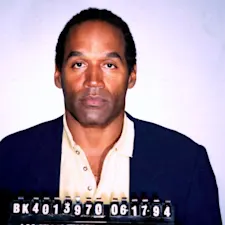
Inside the Mind of NYC's 'Mad Bomber'
From 1940-1957, one man terrorized the city of New York with his campaign of fear. His name was George Metesky — but you may know him as the "Mad Bomber." Let's revisit the details of this complex case that stumped police for 16 long years.
Who was the Mad Bomber and how did he reign terror upon New York City?
Here is a brief timeline of the events of the Mad Bomber case:
Nov. 16, 1940: A bomb is found on the ledge of a window in the Consolidated Edison building in New York City. A message is attached that reads: "Con Edison crooks, this is for you!" The bomb never explodes, and no one knows who planted it.
Sept. 1941: Another bomb, which never explodes, is found near the same building.
Dec. 1941: Police receive a letter signed "F.P.," in which an anonymous person takes responsibility for the two previous bombs and vows to cease planting bombs during the Untied State's impending involvement in World War II.
1950-1957: The bombing campaign resumes, with at least 33 bombs planted in crowded areas throughout New York City, including Grand Central Station, the New York Public Library, Penn Station, Radio City Music Hall, and Macy's. Twenty-two of the bombs actually exploded, injuring 15 bystanders.
No one knew that the Mad Bomber's name was in fact not F.P., but George Metesky.
What was the public reaction in New York City?
Heightened fear, anxiety, and vigilance quickly spread among New Yorkers during the bombing campaign. The Mad Bomber seemed to choose random locations and public spaces for his attacks, and this gave the public a sense of insecurity as they went about their daily lives — not unlike contemporary terrorism threats.
How did Metesky's appearance help him blend in with the public?
While New Yorkers feared bombings in public places, the Mad Bomber was actually hiding in plain sight. On the outside, he looked like anyone's next-door neighbor — a middle-aged man in his 50s who dressed conservatively and wore gold-rimmed glasses, like many men of that time.
He lived with his unmarried sisters in an unremarkable, middle-class house and had previously held a steady job as a plant worker at — you guessed it — Con Edison. He kept his appearance tidy and modest.
All these factors combined to help Metesky blend into the general public and carry out his activities without drawing anyone's attention as the potential mastermind behind the bombings.
How did George Metesky evade capture for so long?
Several factors made it difficult for investigators to connect the dots over the span of 16 years and pinpoint Metesky as the culprit:
-
Metesky's voluntary hiatus from public bombings during World War II created a nine-year evidence gap between the earlier and the later bombings. Furthermore, forensic techniques in the 1940s and 1950s were far less advanced than they are today.
-
Metesky planted bombs in seemingly random locations across New York City, making it difficult to predict his next target. However, he actually lived outside the city in Waterbury, Connecticut.
-
Metesky enjoyed sending letters to the media, signing them "F.P." (which he later said stood for Fair Play), to throw the police off his trail and manipulate public perception to his advantage.
How did criminal profiling play a role in the 'Mad Bomber' case?
By 1956, investigators had become increasingly frustrated with solving the Mad Bomber case. They decided to try a relatively new method of investigation: criminal profiling. Police worked with psychiatrist James A. Brussel to create a profile of the bomber, to narrow down the suspects.
Brussel used the letters from the Mad Bomber and crime scene evidence to construct a detailed criminal profile. In a shockingly accurate portrayal, he predicted the bomber would have the following characteristics:
- A male, 40 to 50 years old
- Born outside the United States, with eastern European heritage (Metesky was the son of Lithuanian immigrants)
- A bachelor that lives with female relatives
- Prone to paranoia
- Athletic build
- No facial hair
- Neatly dressed and likely to wear a double-breasted suit
How was the Mad Bomber eventually captured?
Police provided Brussel's criminal profile to Consolidated Edison and asked the company to search its personnel files for disgruntled employees who matched the profile. Metesky was injured in an industrial accident in 1931, was disabled for half a year, and then terminated. His worker's compensation claim was denied because he waited too long to file, and his three appeals were also denied.
Around the same time, investigators collaborated with The New York Journal-American newspaper to publish an open letter to the Mad Bomber. By luring Metesky into responding to the letter, police were able to gather more clues and narrow down suspects further.
Finally on Jan. 21, 1957, police knocked on Metesky's door and requested to interview him. To their surprise, Metesky precisely fit Brussels' profile, even down to the double-breasted blue suit. He immediately confessed to the crimes and even claimed credit for planting 15 additional bombs at an earlier date.
Police arrested Metesky, and four months later, he was declared legally insane and a paranoid schizophrenic. Sentenced to the Matteawan Asylum for the Criminally Insane without trial, he died in 1994.
History remembers the Mad Bomber case not only for the terror it brought to New York City over 16 years, but also because it set the stage for how investigators would use criminal profiling to solve complex cases in the future.
References: George Metesky | Unmasking the Mad Bomber | A 16-Year Hunt For New York's 'Mad Bomber' | Criminal profiling: the reality behind the myth
























